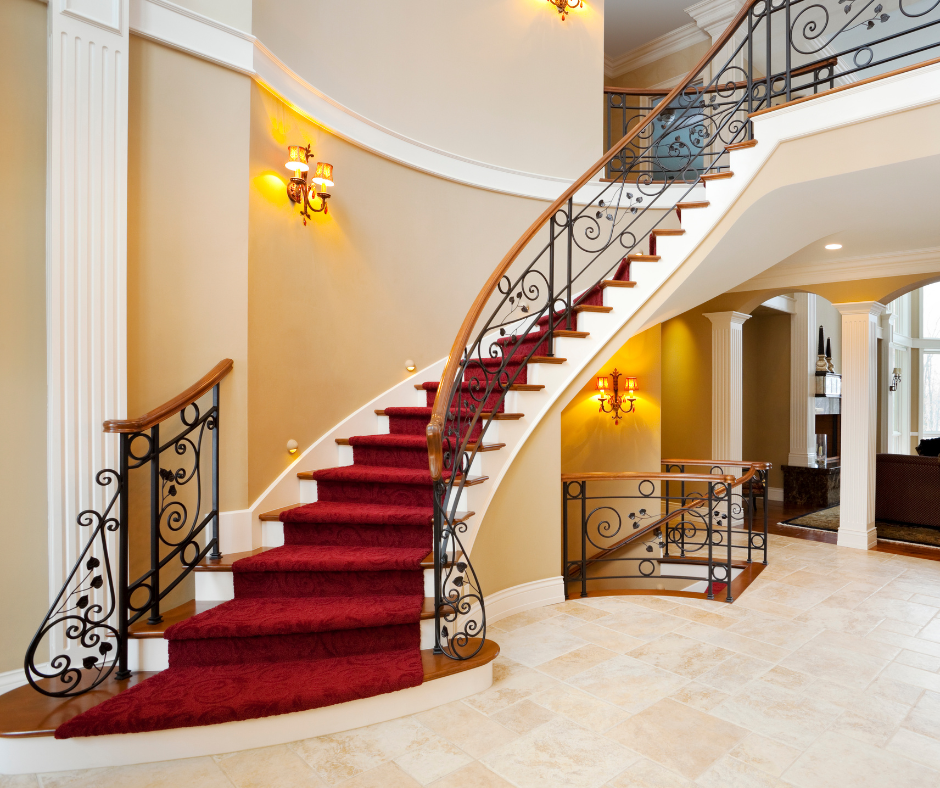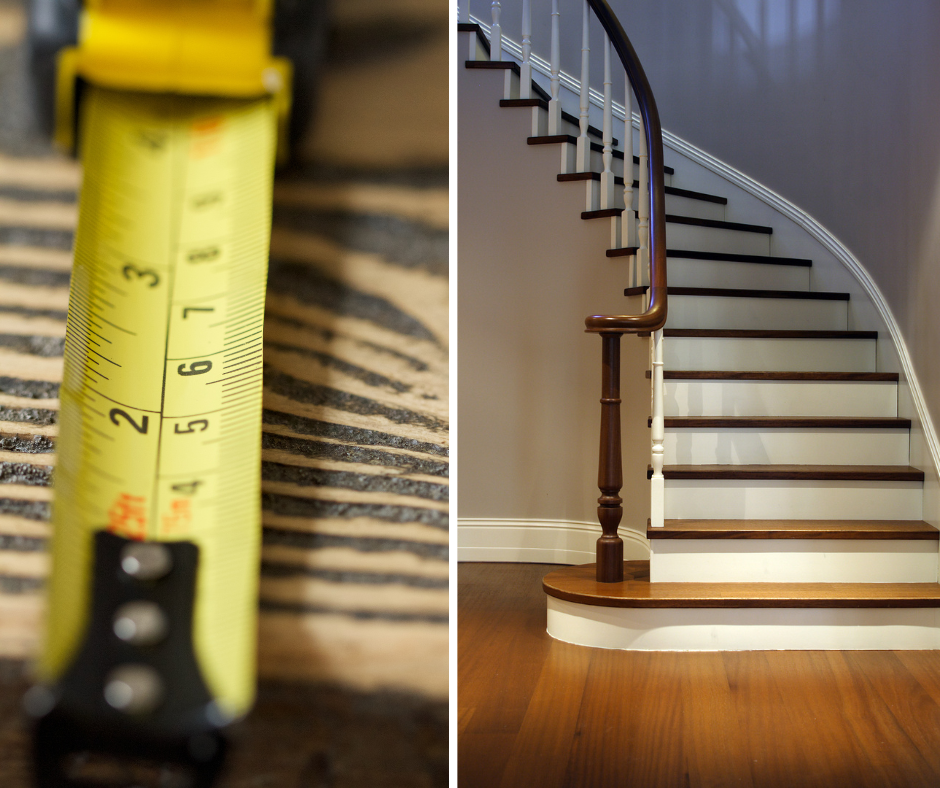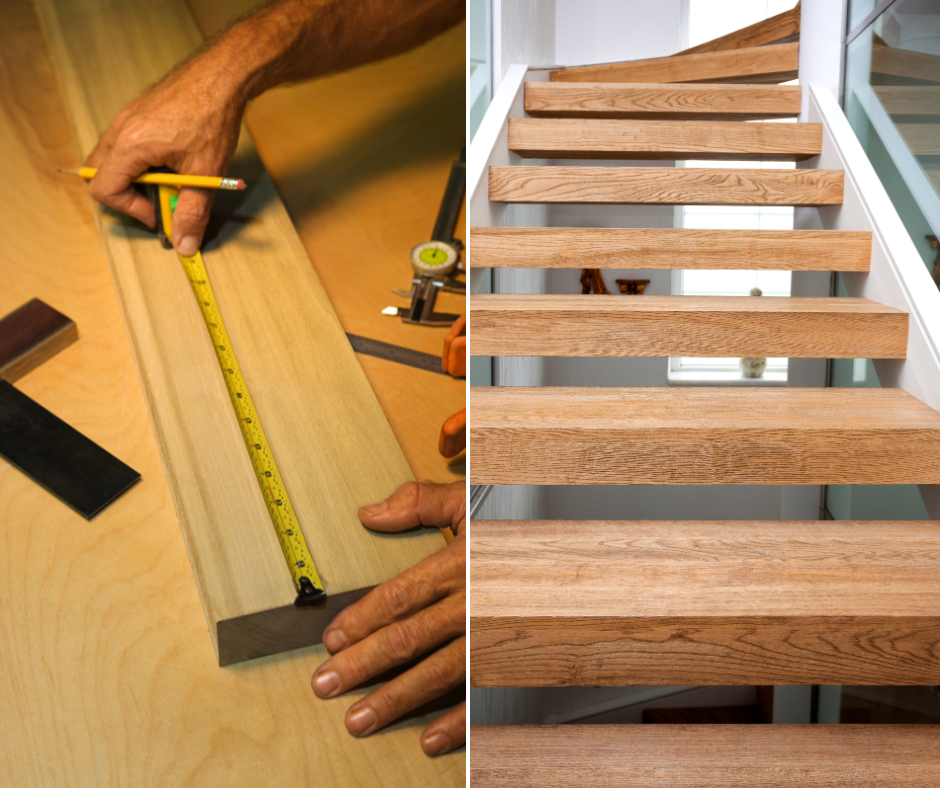A great staircase is more than just steps—it’s about safety, comfort, and flow. A well-designed staircase starts with getting the staircase slope for comfortable step angle just right. This angle comes from the relationship between each step’s rise and run, shaping how easy and safe it feels to use. In this guide, you’ll learn how to measure and adjust your slope while using carpet stair treads to boost both safety and comfort.
Mastering the staircase slope for comfortable step angle ensures that every step feels natural and easy to navigate. This guide shows how to avoid common mistakes, optimize your design for space and style, and include safety features like carpet stair treads. Let’s dive in and make your staircase a showpiece of both function and beauty.
What Is Staircase Slope for Comfortable Step Angle?
The staircase slope for comfortable step angle is the angle between the stairs and the horizontal floor.
This angle is determined by two measurements:
-
Riser height – how tall each step is
-
Tread depth – how deep each step is
The relationship between these dimensions sets the angle of your staircase and directly affects how easy it is to climb or descend.
The ideal slope generally falls between 30 and 37 degrees. This range is steep enough to save space, but gentle enough to make walking comfortable.
Why a Comfortable Step Angle Matters
A staircase that’s too steep feels like climbing a ladder, and one that’s too shallow can feel unsafe.
The right staircase slope for comfortable step angle ensures a natural walking rhythm, reduces the risk of trips and falls, and minimizes strain on knees and ankles.
This isn’t just about math—it’s about making sure your home feels inviting, safe, and easy to navigate for everyone, from kids to older adults.
Standard Slope for Residential and Commercial Stairs
In residential homes, the recommended staircase slope for comfortable step angle ranges between 30 and 37 degrees.
This angle helps maintain a balance between safety and space efficiency. For commercial or public spaces, the slope is often reduced to 26 to 30 degrees to accommodate people with mobility challenges.
Always check local building codes to ensure compliance and prioritize safety.
How to Accurately Determine Staircase Slope
Measuring the staircase slope for comfortable step angle is a straightforward process.
-
Measure the Total Rise: Find the vertical distance between the lower and upper floors.
-
Measure the Total Run: Measure the horizontal length from the first to the last step.
-
Apply the Formula: Use the calculation: Slope (θ) = arctangent (Total Rise ÷ Total Run)
For example, if the total rise is 96 inches and the total run is 120 inches: Slope = arctan(96 ÷ 120) = 38°
This angle is slightly steeper than ideal, suggesting you might need to adjust measurements for comfort.
How to Calculate Rise and Run for Steps
A key step to achieving the perfect staircase slope for comfortable step angle is knowing how to calculate rise and run for steps.
Here’s how:
-
Find the Total Rise: Measure from the bottom to the top of the staircase.
-
Decide on Number of Steps: Divide the total rise by your ideal riser height (typically 7–8 inches).
-
Measure the Total Run: Measure how far the staircase will extend horizontally.
-
Divide the Run: Divide the total run by the number of steps to get the tread depth.
For example:
-
Total Rise = 96 inches
-
Number of steps = 12
-
Riser Height = 96 ÷ 12 = 8 inches
-
Total Run = 120 inches
-
Tread Depth = 120 ÷ 12 = 10 inches
The slope can be recalculated using: Slope = arctangent (96 ÷ 120) = 38°
This whole process—how to calculate rise and run for steps—is essential for ensuring each stair feels natural and safe.
Safety and Style Go Hand in Hand
The right staircase slope for comfortable step angle not only makes your stairs safer but also sets the tone for your home’s design.
Features like carpet stair treads provide extra grip, reduce noise, and cushion each step. They’re especially useful if your slope is on the steeper side or if your stairs see heavy foot traffic.
Other ways to enhance safety include adding contrasting colors at step edges, installing handrails on both sides, and using soft lighting along the staircase.
Mistakes to Avoid When Planning Your Staircase
Even seasoned DIYers can make missteps when working with the staircase slope for comfortable step angle.
Here are common pitfalls to watch for:
-
Ignoring codes: Always confirm local requirements for slope and safety.
-
Choosing style over function: Don’t sacrifice comfort for looks.
-
Skipping calculations: Always measure rise and run and calculate slope.
-
Using incompatible materials: Avoid slippery surfaces on steeper stairs.
-
Neglecting safety features: Handrails and carpet stair treads are essential.
Avoiding these mistakes ensures your staircase looks great and functions beautifully for years.
Tips for Working with Tight Spaces
Sometimes, home layouts require a steeper staircase slope for comfortable step angle.
If this is the case, here’s how to maintain comfort and safety:
-
Opt for deeper treads whenever possible.
-
Add intermediate landings to break up long flights.
-
Use textured or non-slip surfaces to enhance traction.
-
Incorporate soft materials like carpet stair treads for extra cushion.
A tight space doesn’t mean you have to compromise on comfort—it just means you need smart design solutions.
Enhancing Staircase Functionality with Custom Features
Beyond slope and materials, custom touches can make a big impact.
Consider adding:
-
Under-stair storage to maximize space
-
Integrated lighting for added safety and ambiance
-
Personalized color schemes that reflect your style
-
Custom carpet stair treads that match your décor
These additions turn a staircase from a functional necessity into a design feature that adds value and character to your home.
Stepping It Up
Designing the perfect staircase slope for comfortable step angle starts with precise measurements, thoughtful calculations, and smart design choices.
Remember to measure your rise and run carefully, use the slope formula, and calculate rise and run for steps to ensure a comfortable and safe angle.
With Oak Valley Designs, you can add custom stair solutions that combine beauty, comfort, and safety—all while showcasing your unique style.
Let’s make your staircase a space where design and functionality meet.
Ready to Build the Perfect Staircase?
At Oak Valley Designs, we make it easy to achieve the ideal staircase slope for comfortable step angle—with custom, made-in-the-USA solutions designed for real homes.
Whether you’re building new stairs or upgrading with carpet stair treads, our expert team will guide you through every step. Get comfort, style, and safety in one simple package.
-
Website: https://oakvalleydesigns.com/
-
Phone: 706.331.0315
-
Email: info@oakvalleydesigns.com
-
Address: 30 River Ct SW Bldg E Cartersville, Ga 30120




